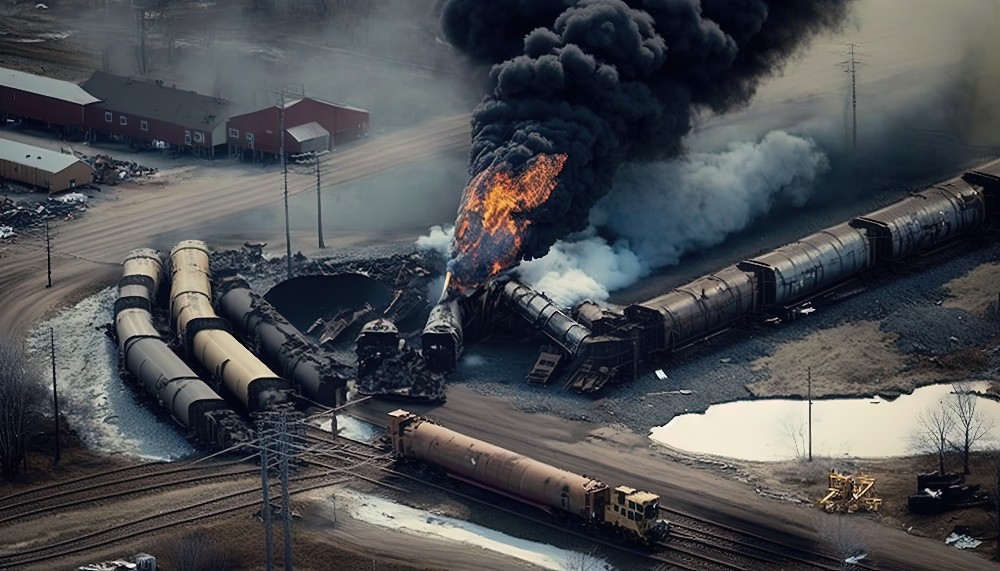
![[sort:pic]](/template/default/images/banner/3-5.jpg)

Every micro change is worth commemorating and creating value for customers in the process of change.
Share
Numerous NS Derailments Cause Legislators to Scramble to Improve Safety

Rail safety improvements are at the forefront of U.S. legislator’s minds after a second Norfolk Southern (NS) train derailed last Thursday, hours before NS president, Alan Shaw, was due to appear before the United States Senate to testify about the derailment of another NS train in East Palestine, Ohio last month.
Luckily for NS, last week’s derailment caused no injuries or reports of any hazardous leaks for the 30 cars that derailed. However, NS wasn’t so lucky last month when one of its trains derailed in Ohio, spilling vinyl chloride, a hazardous chemical. The incident sparked a fire and caused 4,700 East Palestine residents to evacuate their homes.
To no one’s surprise, the rail industry has the spotlight on them due to this series of accidents and the rising frustration over deteriorating service levels and delays. Critics of the rail industry have blamed the accidents and service declines on staff shortages and a lack of investment, as railroad management appears to be more concerned with operating ratios as a measure of “precision scheduled railroading”.
Since the derailment in East Palestine, lawmakers have become increasingly strident on rail safety, accusing the railway management of “massive lobbying” to prevent the implementation of stricter safety measures.
However, new legislation was presented to the U.S. Senate on March 1st that, if passed, would introduce a series of new regulations to raise the safety measures of the rail industry. The legislation package, known as the Safe Freight Act of 2023, includes the accelerated phasing out of older tank cars and requires a two-staff minimum crew for freight trains, as well as a requirement for railways to install heat detectors every ten miles of track, implement new performance standards, keep detailed maintenance records, and set up temperature ranges that trigger warnings.
Heat sensors have been a focal point in the debate over how to improve rail safety. The derailment on February 3rd, in Ohio, was caused by an overheated bearing, which also started the fire. There were heat sensors on the track, 20 miles, and 30 miles before the accident site, that registered overheating but failed to trigger an alarm, due to the registered temperature being below the current critical threshold. The third and final heat sensor near the accident site registered a dramatically higher temperature and did set off an alarm before the derailment, but by then it was too late to do anything.
The Chairwoman of the National Transportation Safety Board, Jennifer Homendy, said in a press conference last month, that if there had been more heat sensors placed along the railway, the derailment might not have happened.
In response, representatives of the Association of American Railroads pledged last week to increase the number of sensors on their tracks, announcing that all Class I carriers had promised to install roughly 1,000 new “hot bearing detectors”, to achieve an average spacing of 15 miles between them. Furthermore, the carriers promised to stop their trains to inspect bearings whenever the temperature reading from a sensor went above 170 degrees Fahrenheit and all seven Class I railways will start using the Confidential Close Call Reporting System, which enables staff to report safety issues anonymously.
During Mr. Shaw’s hearing in Washington last week, he admitted NS’s safety measures were not enough, despite spending an annual $1 billion on safety, and promised to invest in improvements such as more detectors and digital train inspections.
Mr. Shaw told the Senators in the hearing, “In a significant departure from the railroad industry’s recent past, we deliberately moved away from a singular focus on operating ratio, which is a common industry measure of efficiency. Instead, we are taking a more balanced approach to service, productivity, and growth.”.
In an effort to legitimize his pledge toward safety, Mr. Shaw promised that during periods of economic downturn, his company would provide his employees with additional safety training instead of furloughing workers.
Mr. Shaw expressed deep regret for the derailment and its effects on the community of East Palestine and promised to offer financial support to help support the community.
Whether your supply chain utilizes intermodal transportation or not, these accidents highlight the importance of cargo insurance. If you’re not sure if your cargo is covered, rest assured that shengshigroup is ready to help, as we have been for the past 50 years putting customers forward and building lasting relationships. Contact us today to learn more about cargo insurance and what customer forward means to us. Follow us on Linkedin and Twitter to stay up to date with industry news and alerts.